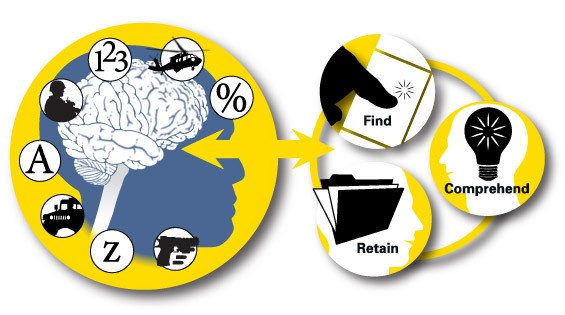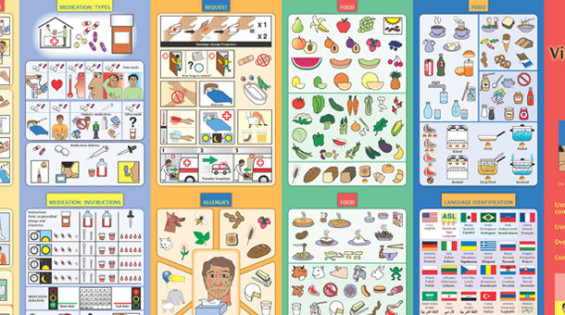Minimal Text, Extensive Images
Learn More About Visual Language
Learn About Kwikpoint
What is Visual Language?
“Sight is swift, comprehensive, simultaneously analytic, and synthetic. It requires so little energy to function, as it does, at the speed of light, that it permits our minds to receive and hold an infinite number of items of information in a fraction of a second.”
CALEB GATTENGO, Towards a Visual Culture
“We have no choice but to be drawn to images. Our brains are beautifully wired for the visual experience. For those with intact visual systems, vision is the dominant sense for acquiring perceptual information. We have over one million nerve fibers sending signals from the eye to the brain, and an estimated 20 billion neurons analyzing and integrating visual information at rapid speed. We have surprisingly large capacity to picture memory, and can remember thousands of images with few errors.
We are also compelled to understand images. Upon viewing a visual, we immediately ask, “What is it?” and “What does it mean?” Our minds need to make sense of the world, and we do so actively. To understand something is to scan and search our memory stores, to call forth associations and emotions, and to use what we already know to interpret and infer meaning on the unknown. As we derive pleasure, satisfaction, and competence from understanding, we seek to understand more.”
CONNIE MALAMED, Visual Language For Designers
An image that communicates an idea and information presupposes the use of a visual language. Just as people can ‘verbalize’ their thinking, they can ‘visualize’ it. A diagram, a map, and a painting are all examples of the use of visual language. Its structural units include line, shape, color, form, motion, texture, pattern, direction, orientation, scale, angle, space and proportion.
Kwikpoint uses visual ianguage as a way to communicate information using pictures and graphics. Visual language makes it easy to find, comprehend, and retain information.




